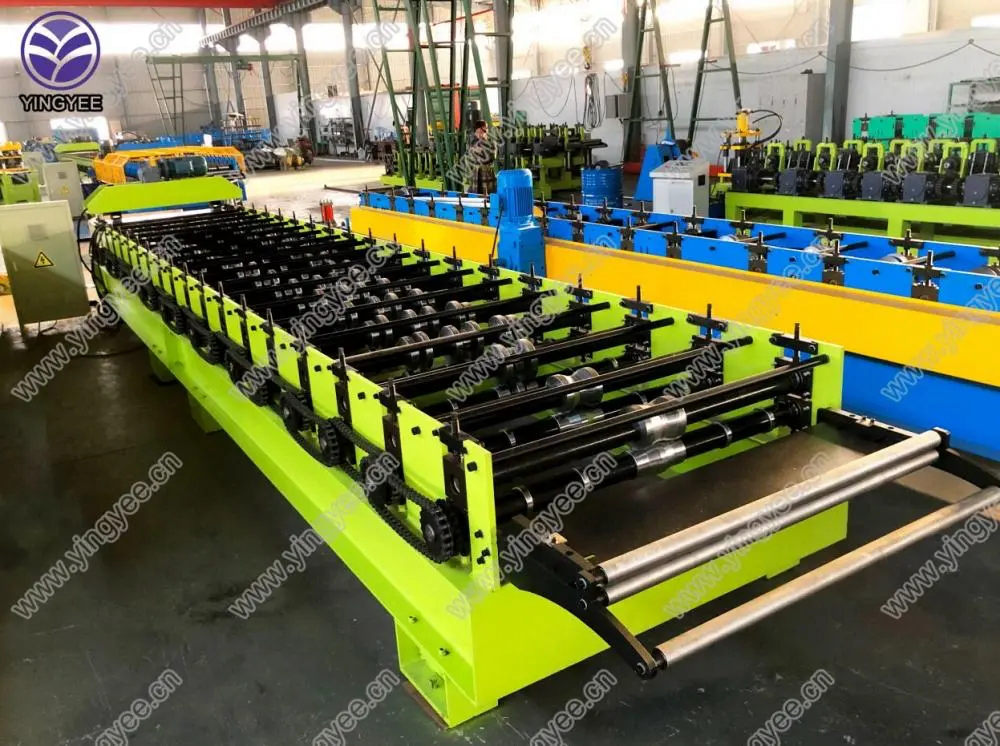
Double Layer Roofing Sheets Forming Machine Enhancing Efficiency and Versatility in Construction
In the ever-evolving world of construction, the demand for innovative building materials continues to rise. Among these materials, roofing sheets play a crucial role in ensuring that structures are not only durable but also aesthetically pleasing. One of the most significant advancements in the production of roofing sheets is the double layer roofing sheets forming machine. This state-of-the-art technology offers manufacturers a unique opportunity to enhance efficiency, reduce costs, and increase product versatility in their construction projects.
What is a Double Layer Roofing Sheets Forming Machine?
A double layer roofing sheets forming machine is a specialized industrial equipment designed to produce two distinct types of roofing sheets simultaneously. It operates through a computerized control system that allows manufacturers to switch between different profiles, styles, and thicknesses without the need for multiple machines. This dual-functionality maximizes the use of resources, saving both space and energy in the production process.
Key Features and Benefits
1. Cost Efficiency One of the standout features of this machine is its cost-effectiveness. By reducing the number of machines required to produce multiple sheet types, manufacturers can lower their operational costs. Additionally, it minimizes the complications associated with maintenance and repair, leading to further savings.
2. Space Saving In many manufacturing setups, space is a premium resource. The double layer roofing sheets forming machine occupies a smaller footprint compared to separate machines dedicated to single-layer production. This efficiency allows for better organization of the production floor and enables the allocation of resources to other critical areas.
3. Versatility The versatility of this machine is a significant advantage for manufacturers. Being able to produce different roofing sheet profiles adds flexibility to inventory and allows manufacturers to meet a broader range of customer needs. Whether it’s producing corrugated sheets, tile profiles, or standing seam designs, the double layer machine can handle various demands seamlessly.

4. High Productivity With advanced technology and design, these machines can produce a large volume of roofing sheets in a relatively short amount of time. The combination of speed and precision improves overall productivity and supports large-scale construction projects without compromising quality.
5. Enhanced Quality Control Modern double layer roofing sheets forming machines are equipped with advanced monitoring systems that ensure consistent quality throughout the production process. Automated adjustments and feedback loops help maintain precise tolerances and reduce waste, leading to a more sustainable production approach.
Applications in Construction
The applications of double layer roofing sheets are vast and varied. They are used extensively in residential buildings, commercial projects, industrial facilities, and even agricultural structures. Their robust and lightweight design contributes to energy efficiency and structural integrity, making them ideal for a range of climates and designs.
Furthermore, as sustainability becomes a more significant concern in the construction industry, the ability to produce high-quality roofing sheets from recycled materials becomes increasingly valuable. Manufacturers using double layer technology can incorporate eco-friendly processes that align with global sustainability goals.
Conclusion
The double layer roofing sheets forming machine represents a pivotal advancement in the construction industry, marrying technology with practicality. Its ability to produce multiple types of roofing sheets efficiently and cost-effectively makes it an indispensable tool for manufacturers looking to innovate and thrive in a competitive market. As the construction landscape continues to evolve, embracing such technologies will be crucial for meeting the demands of modern architecture and construction methodologies. In doing so, the industry can look forward to a future that prioritizes both quality and efficiency in building practices.